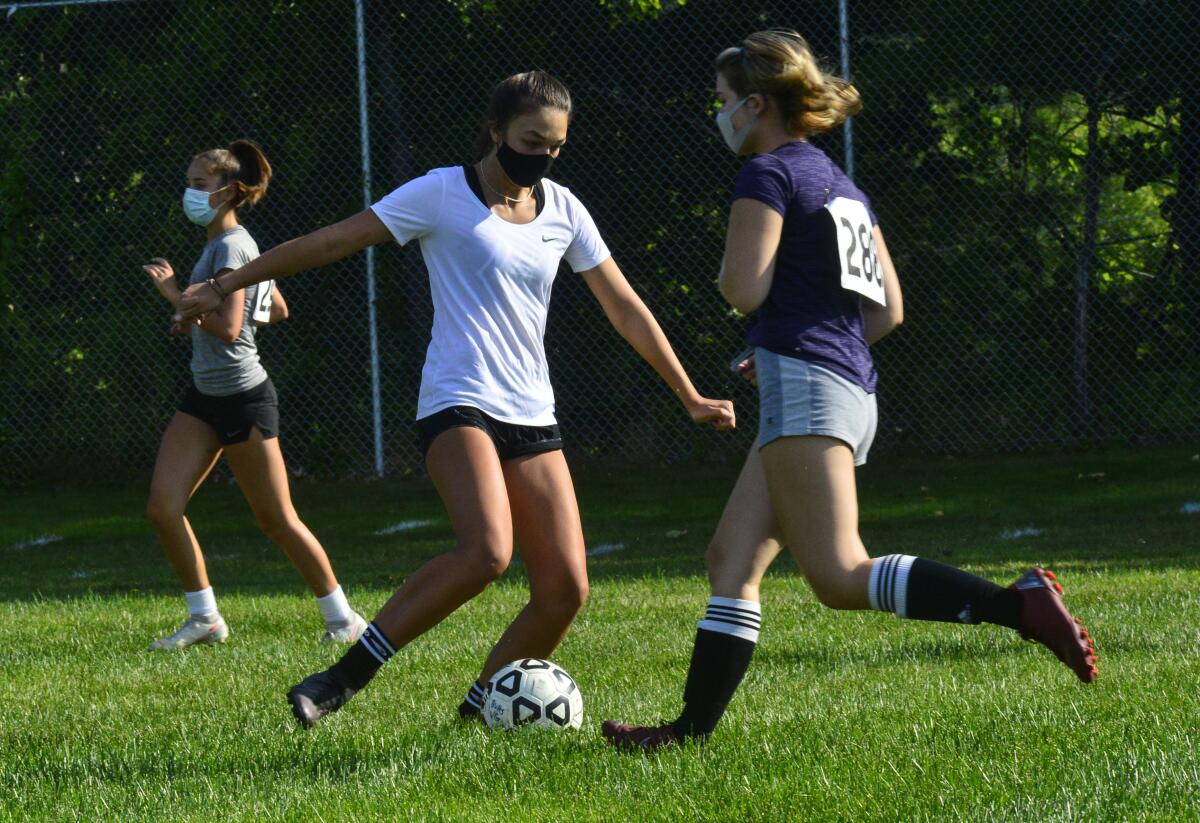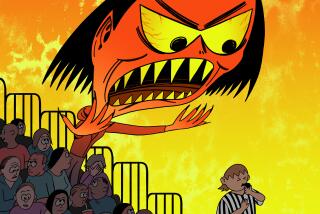Op-Ed: Are youth sports harming our kids’ mental health?

In the darkest days of the COVID-19 pandemic, I swore I’d never again complain about driving carpool for my kids’ rock-climbing team through Seattle traffic. Medical science has long touted the physical and mental health benefits of children’s sports. Add in social interaction, and youth sports feels like an all-in-one pandemic fix.
But as youth teams and leagues return, it’s worth examining what our children are actually signed up for. Youth sports are no longer the neighborhood pickup games of American lore. In recent years children as young as 6 and 7 are increasingly enrolling in high-level sports programs with professional coaches and year-round competition schedules.
By age 13, up to 70% of children have dropped out of organized sports. I was certain the stats wouldn’t apply to my family — until two of the best, strongest, older athletes on my kids’ climbing team dropped out.
Evidence suggests that as young people compete more intensely in sports, gains in mental wellness may be replaced by mental health challenges particular to competitive athletics. Pre-pandemic, up to 20% of college athletes experienced major depression. For young athletes competing at national and international levels, anxiety and depression were 20% to 45% — higher in some cases than those in the age-matched control groups. In one study of elite Canadian swimmers, an eye-popping 68% met the criteria for depression.
Supporting psychological well-being in our young athletes feels especially urgent as we emerge from a pandemic that has probably affected everyone’s mental health in some way. Sports medicine experts are just beginning to seriously study the mental health problems that arise in youth sports, but it’s increasingly evident that constant competition, year-round training and injuries can all contribute to anxiety and depression in athletes.
High school sports have resumed after the COVID-19 shutdown. Here is how it touched aspects of athletes’ lives, from school to training to recruiting.
Humans are wired with an ancient nervous system that activates a “fight or flight” response to perceived danger — the kind of adrenaline storm that can also be triggered by playing in sporting events like track meets and soccer games. Athletes who don’t learn to manage the stress of repetitive competition can experience anxiety and diminished performance — often referred to as choking. The feeling of not living up to one’s potential can undermine confidence and optimism, which may lead to athletes dropping out.
Injury is one of the strongest risk factors for mental health issues in athletes. It is linked to clinical depression and can trigger thoughts about low motivation and laziness. Even after returning to play, the prospect of reinjury may be a source of anxiety. Young athletes training year round in a single sport are at greater risk of being injured compared to athletes playing multiple sports. Eventually, anxiety and depression can interfere with training and performance and alter an athlete’s physiology.
As a teenager I played tennis for my high school team and in extramural tournaments, chasing a ranking in an era when athletes often played a different sport every season. Eventually I burned out. Even now, picking up a racket feels like pulling teeth.
While recent research identifies overwork, overtraining and depression as probable causes of youth sports burnout, athlete mental wellness can be supported at home and at practice.
Athletes should be honest and realistic about goals. Parents are a valuable sounding board but should respect the goals an athlete chooses. Balancing academic and social obligations with a serious training schedule can be a source of chronic stress that school peers and parents may be unable to relate to.
Athletes and coaches can focus on play and skill development, rather than who finished first. Mental techniques to manage competition stress can also be trained — and may even provide a competitive edge. Pay attention to whether the sport no longer seems fun for the player. Look for signs of depression or anxiety, including big shifts in sleep or eating habits.
Parents, coaches, teammates and peers should talk — and listen — to the student-athletes in their lives. It can help more than one might guess. Ask open-ended questions that allow the person to be comfortable expressing feelings. Being able to talk about the stress of team dynamics or competition can be beneficial. Just by talking, individuals can sometimes identify the next actions to take.
Research shows that writing about difficult moments and situations can also improve mental wellness. Some athletes make it a practice to write about goals and regularly reflect on their feelings about challenging events. This practice may initially feel distressing as difficult feelings surface, but in the days and weeks to come their brains may be in a better place.
If talking or writing doesn’t result in progress, connect with a healthcare expert like a trusted pediatrician or a mental health professional, and get guidance on how to help the athlete’s mental well-being.
Playing sports should be fun. Playing sports should feel mentally healthy. Some of us didn’t play the long game with our own childhood sports. It can be different for our kids.
Audrey Young is a board-certified internal medicine physician in Seattle and a member of USA Climbing’s medical committee.
More to Read
A cure for the common opinion
Get thought-provoking perspectives with our weekly newsletter.
You may occasionally receive promotional content from the Los Angeles Times.







